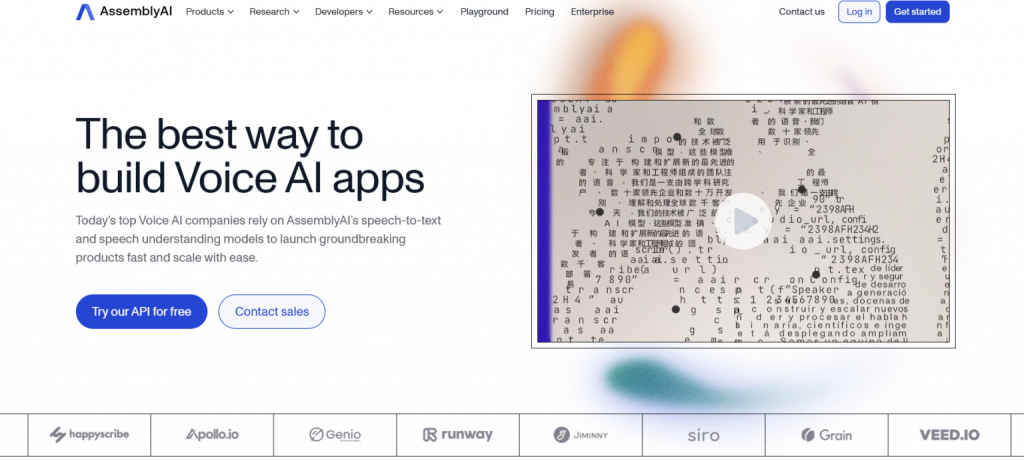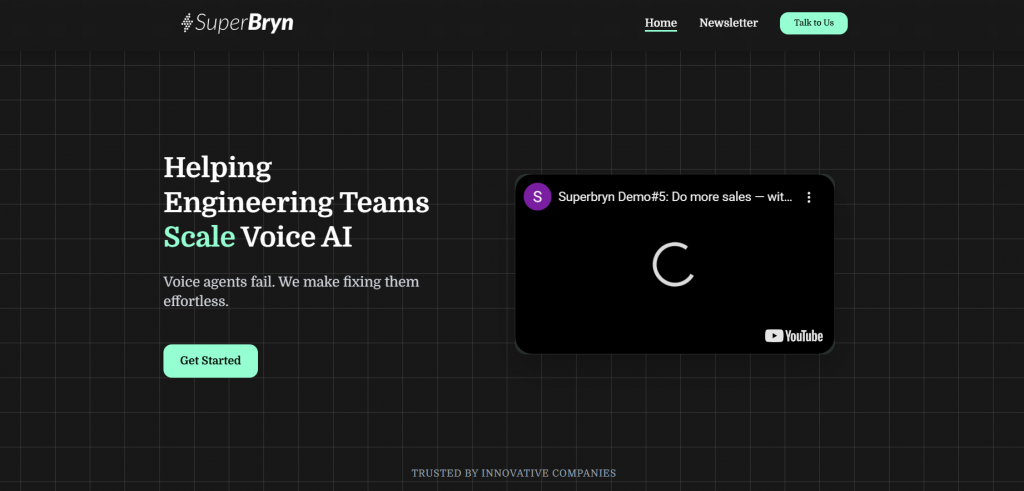In the world of voice AI development, a critical question often arises: is your biggest challenge understanding what is being said, or is it improving how your AI agent responds and adapts over time? This isn’t just a technical detail; it’s a strategic choice that defines your entire project. It’s the core of the Superbryn.com Vs Assemblyai.com debate.
One platform offers a powerful ear to listen to the world’s audio, while the other provides a brain to help your existing agent learn and grow smarter with every conversation.
The demand for intelligent voice agents that can do more than just follow a rigid script is exploding. Businesses need AI that can handle diverse accents, understand nuanced conversations, and improve from real-world interactions.
But how do you get there? Do you start with the world’s most accurate transcription engine, or do you implement a system for continuous learning? This article will dive deep into the Superbryn.com Vs Assemblyai.com comparison, helping you decide which platform is the right foundation for your voice AI ambitions.
Table of contents
Understanding the Core Mission: Transcription vs. Adaptation
To make the right choice, you first need to understand that Superbryn.com and AssemblyAI.com are designed to solve fundamentally different problems. One is a foundational data processing tool, while the other is a sophisticated optimization layer.
What is AssemblyAI.com? The Gold Standard for Audio Intelligence

Think of AssemblyAI.com as a powerful API that acts as a universal translator for audio. Its primary job is to take raw audio or video data and convert it into highly accurate, structured text. It is widely recognized in the developer community for its state of the art speech to text (STT) models, which form the bedrock of countless voice enabled applications.
Key Strengths of AssemblyAI.com Include
- Best in Class Transcription: At its core, AssemblyAI provides exceptionally accurate speech recognition, capable of handling noisy environments and a wide range of topics.
- A Rich Suite of AI Models: It goes far beyond simple transcription. The API can also provide speaker identification (who spoke when), automatic summarization, sentiment analysis, topic detection, and even redact sensitive information from the text.
- Developer First API: It is designed for ease of use. With a simple API call, developers can unlock a massive amount of audio intelligence without needing to build, train, or maintain their own complex AI models.
Developers turn to AssemblyAI when their primary need is to process audio data at scale, whether it’s for creating subtitles, analyzing customer feedback calls, or powering a voice search feature.
Also Read: Programmable Voice APIs Vs Cloud Telephony Compared
What is Superbryn.com? The Learning Layer for Production Voice AI
Superbryn.com operates on a different level of the voice AI stack. It is not an STT provider. Instead, it is an AI speech model orchestration platform designed to make your live, production voice agents smarter. Its core mission is to help your agent learn from its mistakes and adapt to real-world user behavior.

Key Strengths of Superbryn.com Include
- Production Agent Improvement: Superbryn is built for agents that are already deployed. It helps engineering teams analyze live call data to see where the agent is failing.
- Automated Feedback Loops: The platform creates a system for continuous improvement. It can identify conversations that went poorly and provide insights to help developers quickly refine prompts and improve the agent’s logic.
- Nuanced Understanding and Adaptation: A key focus for Superbryn is helping agents understand diverse and challenging speech patterns, such as strong regional accents, to reduce frustration and improve success rates.
Developers choose Superbryn.com when they have a voice agent in the field and their biggest challenge is scaling its performance and making it more robust and adaptive.
Also Read: How To Lower Latency In Voice AI Conversations
Superbryn.com Vs Assemblyai.com: A Head-to-Head Functional Analysis
To put the Superbryn.com Vs Assemblyai.com comparison into sharp focus, let’s look at their functions side by side in a table. This makes their distinct roles crystal clear.
| Feature | AssemblyAI.com | Superbryn.com |
| Primary Focus | Speech to text and audio data analysis | Production voice agent orchestration and improvement |
| Core Offering | An API for foundational AI models (STT, Summarization, etc.) | A platform layer for adapting and scaling live agents |
| Ideal Use Case | Transcribing and understanding audio files at scale | Refining an existing voice bot that struggles in production |
| Key Differentiator | World class transcription accuracy and a rich feature set | Automated feedback loops and accent specific adaptation |
| Target Audience | Developers needing core audio intelligence components | Engineering teams managing and scaling live voice AI |
Real World Scenarios: Putting the Platforms to the Test
Let’s explore some practical examples to see where you would use each platform. This will help you move beyond the theoretical Superbryn.com Vs Assemblyai.com debate.
When to Choose AssemblyAI.com
Imagine you are developing a meeting assistant application. The goal is to record online meetings, transcribe them, identify who said what, and then generate a concise summary with action items.
In this case, AssemblyAI.com is the perfect choice. You are not building a live, interactive agent. Your task is to process recorded audio files. You would use AssemblyAI’s API to:
- Accurately transcribe the entire meeting.
- Use its speaker diarization feature to label each part of the transcript with the correct speaker.
- Use its summarization feature to automatically create the meeting notes.
Also Read: How VoIP Calling API Integration for ElevenLabs.io Improves AI Voice Apps?
When to Choose Superbryn.com
Now, imagine your company has deployed an AI powered agent to handle customer service calls for a global audience. The agent performs well with North American customers but has a high failure rate with callers from Australia and India due to different accents and slang.
Here, Superbryn.com is the clear solution. You already have an agent, but it needs to get smarter. You would use Superbryn to:
- Analyze the failed calls to pinpoint exactly where the misunderstandings are happening.
- Receive AI powered recommendations on how to adjust your prompts or models.
- Implement these changes to continuously improve the agent’s ability to serve a global customer base.
Conclusion: The Right Tool for the Right Job
Ultimately, the Superbryn.com Vs Assemblyai.com choice is not about declaring one platform superior to the other. It is about correctly identifying your project’s primary challenge. They are both powerful tools that serve very different, but equally important, needs in the voice AI ecosystem.
Choose AssemblyAI.com when your goal is to understand and analyze audio content accurately. It is the foundational building block for any application that needs to turn spoken words into valuable data.
Choose Superbryn.com when your goal is to enhance an existing live voice agent’s capabilities, making it smarter, more adaptive, and better equipped to handle the complexities of real-world human conversation.
By choosing the right tool for the right job, you can ensure your next AI voice project is built on a solid foundation for success.
Also Read: Cloud Phone System: Why Businesses Are Moving Away from Landlines
Frequently Asked Questions (FAQs)
Yes, it’s possible. A sophisticated voice agent might use AssemblyAI as its core speech to text engine, while the engineering team uses Superbryn.com to monitor that agent’s performance in production and provide feedback to improve its conversational logic and handling of diverse users.
AssemblyAI.com is purpose built for this task. Its asynchronous API is designed for high volume, accurate transcription of audio and video files.
Superbryn.com is specifically designed to address this problem. Its core value is in helping agents adapt and improve their understanding of nuanced and diverse speech patterns in a production environment.
No. Both AssemblyAI and Superbryn focus on the AI and data processing layers. To connect your voice application to the telephone network, you need a dedicated voice infrastructure provider like FreJun AI, which manages the real time call streaming and telephony.
